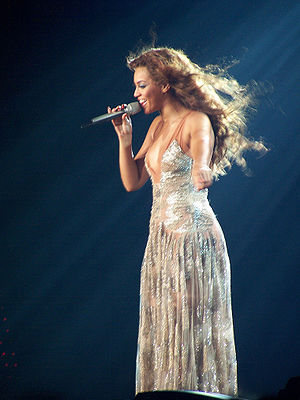 Image via Wikipedia
Image via Wikipedia"Teaching stroke patients to sing "rewires" their brains, helping them recover their speech, say scientists.
By singing, patients use a different area of the brain from the area involved in speech.If a person's "speech centre" is damaged by a stroke, they can learn to use their "singing centre" instead.
Researchers presented these findings at the annual meeting of the American Association for the Advancement of Science (AAAS) in San Diego.
An ongoing clinical trial, they said, has shown how the brain responds to this "melodic intonation therapy".
Gottfried Schlaug, a neurology professor at Beth Israel Deaconess Medical Center and Harvard Medical School in Boston, US, led the trial.
Professor Schlaug explained that his was the first study to combine this therapy with brain imaging - "to show what is actually going on in the brain" as patients learn to sing their words.
Making connections
Most of the connections between brain areas that control movement and those that control hearing are on the left side of the brain.
"But there's a sort of corresponding hole on the right side," said Professor Schlaug.
| Dr Aniruddh Patel, neuroscientist |
"If you damage the left side, the right side has trouble [fulfilling that role]."
But as patients learn to put their words to melodies, the crucial connections form on the right side of their brains.
Previous brain imaging studies have shown that this "singing centre" is overdeveloped in the brains of professional singers.
During the therapy sessions, patients are taught to put their words to simple melodies.
Professor Schlaug said that after a single session, a stroke patients who was are not able to form any intelligible words learned to say the phrase "I am thirsty" by combining each syllable with the note of a melody.
The patients are also encouraged to tap out each syllable with their hands. Professor Schlaug said that this seemed to act as an "internal pace-maker" which made the therapy even more effective.
"Music might be an alternative medium to engage parts of the brain that are otherwise not engaged," he said.
Brain sounds
Dr Aniruddh Patel from the Neurosciences Institute in San Diego, said the study was an example of the "explosion in research into music and the brain" over the last decade.
"People sometimes ask where in the brain music is processed and the answer is everywhere above the neck," said Dr Patel.
"Music engages huge swathes of the brain - it's not just lighting up a spot in the auditory cortex."
Dr Nina Kraus, a neuroscientist from Northwestern University in Chicago, also studies the effects of music on the brain.
In her research, she records the brain's response to music using electrodes on the scalp.
This work has enabled her to "play back" electrical activity from brain cells as they pick up sounds.
"Neurons work with electricity - so if you record the electricity from the brain you can play that back through speakers and hear how the brain deals with sounds," she explained.
Dr Kraus has also discovered that musical training seems to enhance the ability to perform other tasks, such as reading.
She said that the insights into how the brain responds to music provided evidence that musical training was an important part of children's education."
Very interesting article by Victoria Gill
Science reporter, BBC News, San Diego
http://news.bbc.co.uk/2/hi/science/nature/8526699.stm
Thanks for stopping by.
I hope you enjoy your stay at Piano Diana.
Warmest Regards,
LadyD
![Reblog this post [with Zemanta]](http://img.zemanta.com/reblog_e.png?x-id=3352ba18-a538-4607-836d-0cf0670e5e02)

![Reblog this post [with Zemanta]](http://img.zemanta.com/reblog_e.png?x-id=17877149-7d82-4733-b25a-24151c2aae95)

![Reblog this post [with Zemanta]](http://img.zemanta.com/reblog_e.png?x-id=bf706a3e-ac69-4659-b7d7-686d657679eb)

![Reblog this post [with Zemanta]](http://img.zemanta.com/reblog_e.png?x-id=d0dfb2a5-bcb8-4994-a686-46ce4644343e)




![Reblog this post [with Zemanta]](http://img.zemanta.com/reblog_e.png?x-id=c9891449-639b-43a4-9a5f-822dd62aff71)

![Reblog this post [with Zemanta]](http://img.zemanta.com/reblog_e.png?x-id=dd2491b2-4ee2-4b3b-8645-346f8dfef51c)
![Reblog this post [with Zemanta]](http://img.zemanta.com/reblog_e.png?x-id=d077ab62-77f4-4845-b958-67241e93fd86)


